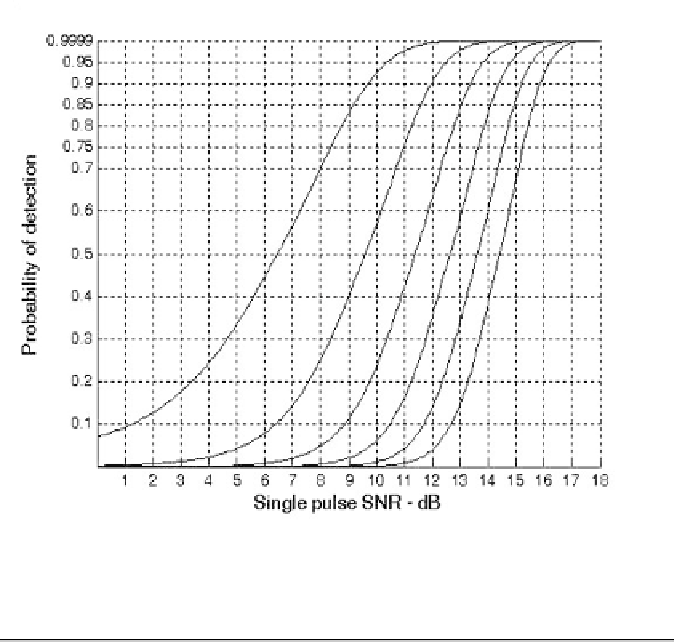Graphics Programs Reference
In-Depth Information
Figure 2.4. Probability of detection versus single pulse SNR, for several
values of
P
fa
.
2.4. Pulse Integration
Pulse integration was discussed in
Chapter 1
in the context of radar measure-
ments. In this section a more comprehensive analysis of this topic is introduced
in the context of radar detection. The overall principles and conclusions pre-
sented earlier will not change; however, the mathematical formulation and spe-
cific numerical values will change. Coherent integration preserves the phase
relationship between the received pulses, thus achieving a build up in the sig-
nal amplitude. Alternatively, pulse integration performed after the envelope
detector (where the phase relation is destroyed) is called non-coherent or post-
detection integration.
2.4.1. Coherent Integration
In coherent integration, if a perfect integrator is used (100% efficiency), then
integrating pulses would improve the SNR by the same factor. Otherwise,
integration loss occurs which is always the case for non-coherent integration.
In order to demonstrate this signal buildup, consider the case where the radar
return signal contains both signal plus additive noise. The
n
P
m
th
pulse is

Search WWH ::

Custom Search